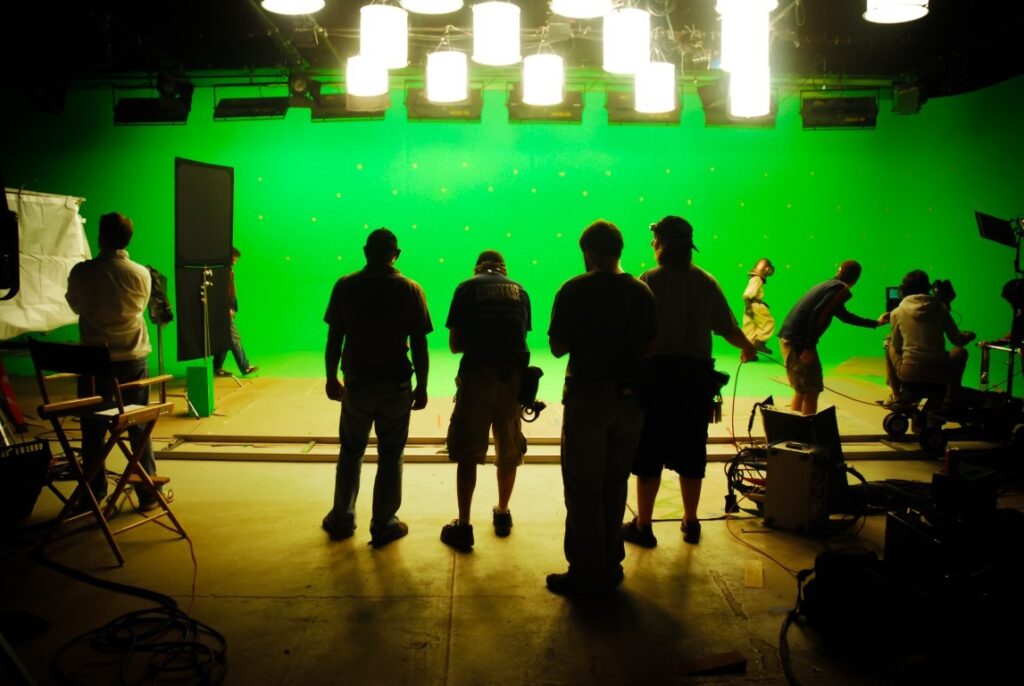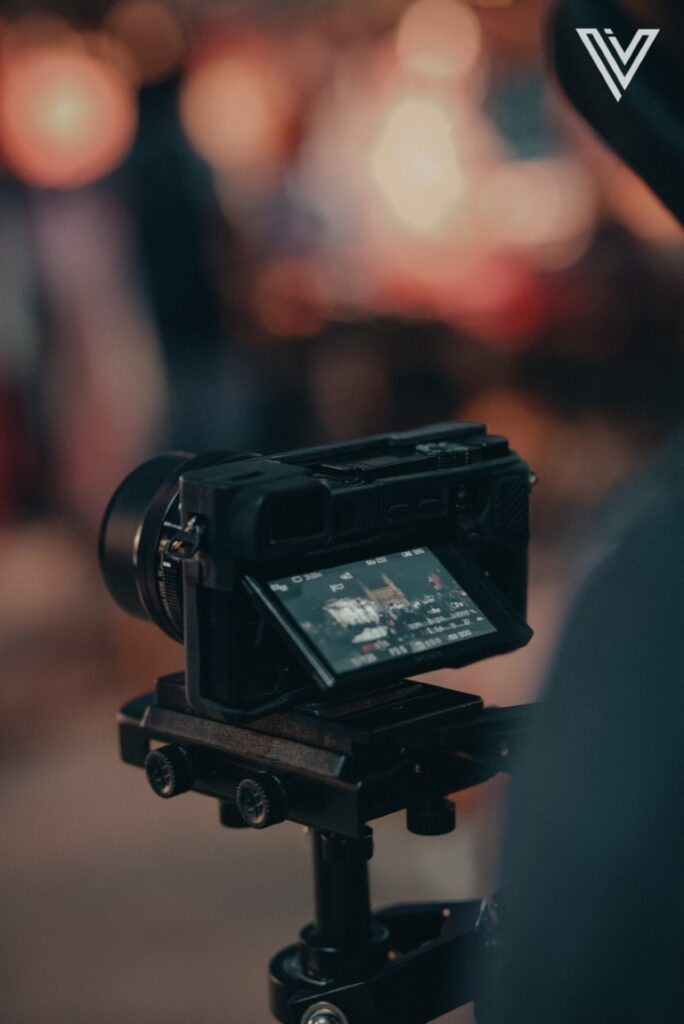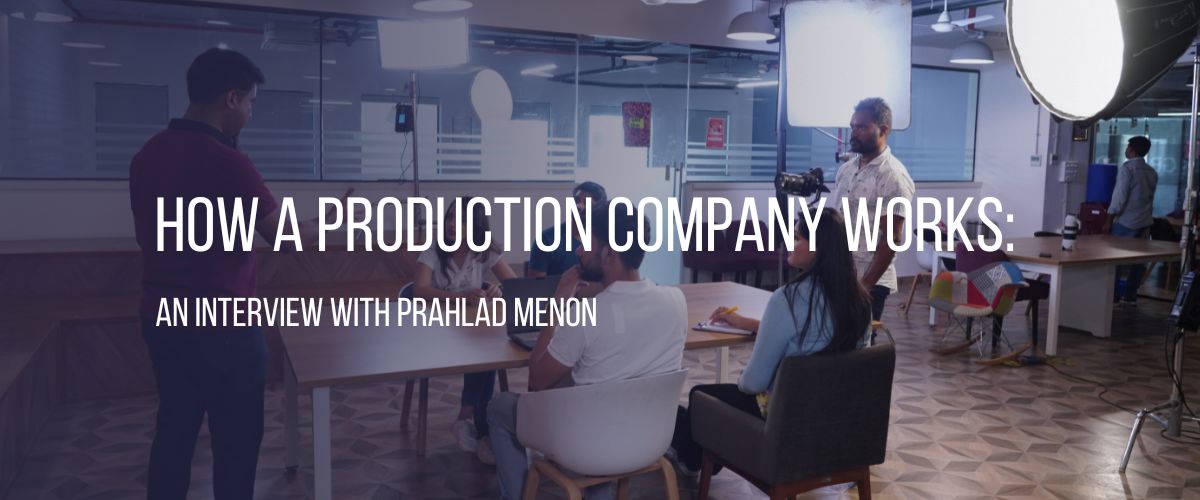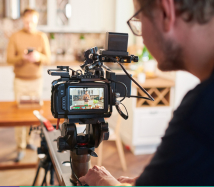A fashion company might be really good at selling clothes, but it’s not that easy to make a full-fledged video promoting the brand. That’s where the production team comes in. These teams bring together a diverse array of professionals, each playing a crucial role in shaping the final video product. The video production team takes care of the entire video production process, from concept to the final cut, and collaborates closely with the company’s marketing and creative departments to bring the brand’s vision to life.
To know more about the working of a production team, we interviewed Prahlad Menon, the owner of CauseInc. and an executive producer and creative director. He graduated as a film student in 2015 from Symbiosis. He describes the production team as skilled individuals working in different roles as directors, cinematographers, scriptwriters, editors, and production coordinators, among others. They work hand in hand, utilizing their expertise and creativity to craft visually stunning and impactful videos that resonate with the target audience.

Prahlad has been working with a camera since he was 15 years old, and he has explored different sectors like wildlife, nature and events. Then he entered the social space where he has been making videos for NGO’s, CSR and not-for-profit organizations to raise funds for them or provide awareness and education. Cause Inc. also got into ad making, digital films, and the corporate film space eventually – it’s successfully executed 3 years of NH7, Zomaland, and smaller events at multiple clubs, pubs, and festivals.
Production work is broadly divided into three stages-
- Pre-Production
- Production
- Post-Production
Let’s discuss these one-by-one.
Pre-Production: Laying the Foundation
The pre-production phase is the crucial starting point, where ideas are formed, plans are made, and the groundwork for the entire project is laid. This stage involves collaboration with clients to understand their vision, goals, and requirements. Clear communication is essential to ensure that both parties are aligned throughout the process. Right from scripting to the final cut video with 2D or 3D animation is discussed beforehand. In the pre-production stage, the client should be convinced enough to trust you for the work.
During pre-production, the production team undertakes a few things like location scouting, budgeting, equipment, crew selection, models (if needed) and permits and legal considerations (again, if needed).
1. Location Scouting
Whether it’s a studio, an outdoor setting, or a specific venue, finding the perfect location is paramount. Factors such as accessibility, aesthetics, and feasibility are considered while selecting the ideal backdrop for the project. Prahlad says that the location should be chosen according to the client’s wish and the production team should try to cut down on some of their expenses if the budget is tight. Additionally, CauseInc has shot all the way from Assam to Tamil Nadu, so they’re quite adept at outdoor shoots.
“Once I drove the team myself to a location to save travel charges and completed the shoot within the same day to avoid hotel expenses. It was a bit hectic. But that’s how you differentiate yourself from others.”
2. Budgeting
Estimating the overall budget required for the project, including expenses such as location fees, equipment rentals, crew salaries, and post-production costs is very crucial. Before proposing a budget, ask the client about their target, brand requirements, capacity, etc. There should be honesty in between and that will come when the client gets comfortable.

Courtesy- Dinesh Gaur
CauseInc has also done projects with some advance money and the rest is paid while the project shoot is going on, of course with trustworthy people. Prahlad remembers when a client said to him- “For today, we just have to manage our work in Rs. 10,000 and do something great.” Though it wasn’t satisfying the bank balance, he gave equal efforts. Because that’s relation building, the client would definitely come back to him for the next time.
According to Prahlad, if you want a client to invest more in the budget, your work should be promising enough. They might show you a reference work of yours to show their expectations, which was an expensive project, but you should be practical and positive. Try to convince them to go for a different, cost-effective and easy way. You can also read about how to optimize your video production budget.
3. Equipment requirements
Ensuring that the team has access to the required resources and technology is vital for capturing high-quality content. Prahlad says that you can either rent or buy equipment depending on one factor – rental costs. If you’re going to repeatedly be renting the same equipment, you might find it worthwhile to spend the money and just buy it. Consider it a one-time investment. You can use it further also. Equipment that needs constant upgrading like lights, camera and fancy lenses should be rented while backgrounds, props, digital assets like add-on mics, tripods should be purchased.

Courtesy- Sangeet Rao
4. Crew Selection
CauseInc. works with more than 100 photographers/ videographers across the country. Prahlad believes that everyone has their own niche. He has a database of people of different age groups, grades and spaces and he knows whom to contact for a specific project. Prahlad adds one interesting point here- “If there’s a product shoot and I know a top photographer at some place who would do better than the local photographer available, I’ll fly him down there.”

Courtesy- Sangeet Rao
It also depends on the work experience of the photographer/ videographer.
“A 7-year experienced guy won’t do a small product shoot of 2 hours while a freelancer with 10 months of experience won’t be ready to handle a 6-day project. It took us time to figure this out, but now we know how to choose.”
Apart from this, make-up artists, stylists, costume designers, script writers, editors, etc. are required. Prahlad has built good connections with these profile people to easily handle projects.
5. Models
Casting the right models who align with the project’s theme and goals is essential. This involves talent agencies, auditions, or even scouting talent through social media platforms. Prahlad shared some not-so-good memories of working with models and he suggests having a written contract signed by them, so they won’t back off.
“Well, that’s not the case every time but why should we take a risk.”
6. Permits and legal considerations
Adhering to legal requirements helps mitigate risks and ensures a compliant production process. You should have a proper layout of the project to check for location releases, insurance coverage, and copyright clearances for music or other copyrighted materials. Client won’t be entertained if you come up with these bills later on.
Production: Bringing Ideas to Life
Once the pre-production phase is complete, it’s time to move on to the production stage. This is where the magic happens, and the project comes to life. With the foundation in place, the production team focuses on capturing the desired content.
- Client Involvement– During production, clients should be actively involved, providing guidance and feedback to ensure that the project aligns with their expectations. And this is very important. Prahlad stresses on the fact that re-shooting is very difficult. Even for a 5-second change in the video, reshooting would require lacs of rupees. It is better to keep the client’s creative team in the loop during the production process itself.
- Keep the team motivated– Prahlad says that if a client is confused between a 15 second or 25 second video, I would ask my team to prepare a 30 second video in the given frame time only. And for that, you need a creative team. He believes that CauseInc comprises of artists and no artist can work on the same thing for more than 3 months, efficiency would come down. You should keep rotating work to keep quality and performance persistent.
- Be responsive– If a photographer is hired for 20 photos, he shouldn’t stop after 20 photos saying that his job is done. “Consider event photography, a new thing happens after every 5 minutes, how can you cover the whole event by clicking 20 photos in the beginning?”
- An extra effort to avoid reshooting– At CauseInc, Prahlad asks his team for 30% extra output than what client has asked for. So, if a client has asked for 15 photographs, the photographer should be asked for 25. Prahlad counters it as a mind game to keep both the photographer and client happy. “Of course, the photographer won’t do 25 shots. Even if he/she completes 20 then we still have the option to choose the best 15 out of them. Everyone is happy and no one feels overloaded.”
- Always have a plan B ready– You never know what wouldn’t work at the time of production so keep a plan B as backup. Prahlad shared real-time issues like what if the editor is not available or the models don’t show up as they have a busy schedule. You can’t postpone the shoot because of one person.

Courtesy- Sangeet Rao
With a good script, an energetic team, and creative ideas, the production process will go smoothly, and the last bit of magic gets done by post-production.
Post-Production: Polishing the Masterpiece
After the production stage, the project moves into post-production, where the captured footage is transformed into the final masterpiece. Post-production involves several intricate processes, including video editing, sound design, color grading, and visual effects.
Video editing brings together all the captured footage, selecting the best shots and arranging them in a cohesive and compelling sequence. It also involves adding transitions, special effects, and animations to enhance the visual experience.
B-Rolls play a major role in post-production. What if you captured a team member in a shot and now you need another clip to replace it? Of course, you can’t think of shooting it again. That’s where B-rolls or simply stock footage come in. You should keep a library of B-roll videos, or you can buy it from stock footage sites like IndieVisual.in (that’s us!). Prahlad says that shooting a B-roll is tougher than A-roll because it needs patience and a deep understanding of simple things. The video should sync with the voiceover or music playing in the background. Here’s an example of B-Roll footage that can be used to showcase Lucknow –
Lastly, ensure that the audio elements are balanced, clear, and synchronized with the visuals. This includes adding music, sound effects, and voiceovers to enhance the overall impact of the project and color grade the video to make sure that the visual aesthetics are fine-tuned to achieve the desired mood and atmosphere.
The meticulously crafted video is delivered to the client for feedback. It is good practice to share 2-3 cuts of the project with different variations, each with its unique editing choices, pacing, and creative nuances. This approach empowers clients to actively participate in the finalization process, ensuring that the end result aligns with their expectations and objectives. Once the client has made their selection, the chosen cut undergoes any final refinements and touches, and the final project is completed.
If you have any doubts about video production, we are at hello@34.100.129.6.









